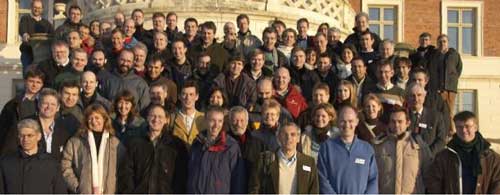
This issue in pdf Subscription Archive: Next issue: July 2005 |
|
||||
Developing an Environmental Modelling Framework for Integrated Assessment of EU Agricultural Policiesby Andrea E. Rizzoli, Carlo Lepori, Roberto Mastropietro and Lorenzo Sommaruga 'SEAMLESS', System for Environmental and Agricultural Modelling; Linking European Science and Society, is an environmental modelling project aimed at creating a framework, named SEAMFRAME, which is specifically targeted for integrated assessment in the agricultural domain. The goal is to deliver a software toolkit to facilitate the comparison and integration of the many different models in existence today. European agriculture is currently undergoing radical changes due to economical pressures imposed by the enlargement of the EU, the revision of WTO agreements, and changes in farm support payments. Such changes interact with the physical and natural environment (eg, climate change, loss of biodiversity). Meanwhile, society demands a green and clean landscape, and farming communities in rural areas are faced with continuous technological innovation.
Scientists and modelers are therefore confronted with the increasing need to deliver scientific results, which can be used by policy makers to assess new policies, at the regional and national scale, that can facilitate agriculture's contribution to sustainable development. The process of evaluation of a policy with respect to the three components of sustainable development (environment, economy, society) requires what has been defined 'integrated assessment' (Parker et al. 2002). Yet, the obstacles to performing integrated assessment studies are substantial, given the dimension and the complexity of the problem. Integration requires that researchers from different disciplines merge and compare their ideas, often scaling up and down the dimension of the problem under study. For instance, in the case of the integrated assessment of agricultural policies, the effect of a subsidy for a given product has a different impact in the various regions, and the related change in farm activity has a very local effect on the environment. Science, through innovation and research, has progressively built a vast body of knowledge specific to various sectors, which can now be considered as components of an integrated system. For instance, for a given crop growth process, there may be tens of different formulations solving the same modelling problem. Thus, the main issue becomes to make this knowledge accessible and re-usable. In fact, computer models are monolithic, difficult to reuse in a different context, and strongly tied to the modelling domain and scale of resolution. For this reason, many groups have been researching the problem of model integration and modelling frameworks to allow a 'seamless' and transparent model integration and re-use across different scientific domains and scales (eg, OpenMI (http://www.harmonit.org/), TIME (http://www.toolkit.net.au/), OMS, just to cite a few). A modelling framework is basically a software environment that supports the development of models, but it also provides a set of facilities to set up model runs, data visualisation and analysis, documentation, archival and discovery of models. A modelling framework also supports the packaging of end-user applications, which can be effectively used to support decision making. An environmental modelling framework adds domain-specific knowledge that enables solving environmental-related issues, for instance, it considers spatial modelling. A new Integrated Project 'SEAMLESS: System for Environmental and Agricultural Modelling; Linking European Science and Society' aims to develop an environmental modelling framework, named SEAMFRAME, which is specifically targeted for integrated assessment in the agricultural domain. This project was defined as a result of a research call from the European Commission within the EU 6th Framework Programme (Global Change and Ecosystems). SEAMFRAME will capitalise on previous research in the development of environmental modelling frameworks. Moreover, it will support a 'declarative' approach to modelling (Muetzelfeldt and Massheder, 2003). A clear-cut separation between model representation (equations) and model manipulation (data processing, integration routines) will allow the effective re-use of the model in different contexts. The model equations will be semantically denoted, by means of Semantic Web technologies such as RDF and Ontologies. This will open the model structure to automated processing, leading to the possibility of searching models according to their specifications - and model linking and composition will be greatly facilitated. Finally, another distinctive feature of SEAMFRAME will be the component-oriented approach of its software architecture. Declarative models will be deployed as software components, which can be manipulated by tools such as calibrators, simulators, optimisation routines, which are themselves software components. The use of introspection (Rahman et al. 2004) will allow tools to adapt to the published interface of models, thus granting the required flexibility and extensibility of the framework. Thirty research institutions from thirteen European countries, including several new member states, are involved in the project. These institutions bring together a vast amount of knowledge and expertise from economic, environmental, agronomic, social and information technology disciplines. The project also includes co-operation with an African and an American research institute. The total budget is 15 million Euros. In 18 months the first prototype should be available and in four years the system should be fully operational. The project is coordinated from Wageningen University (The Netherlands), while the development of SEAMFRAME is coordinated by the Swiss institute IDSIA, part of USI (University of Lugano) and SUPSI (the University of Applied Sciences of Southern Switzerland). Link: Please contact: |
||||


